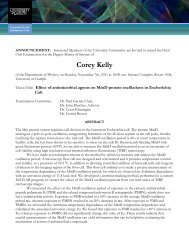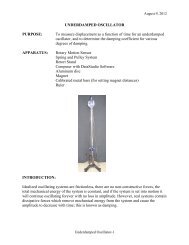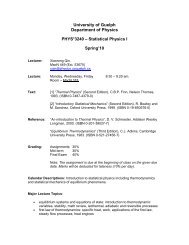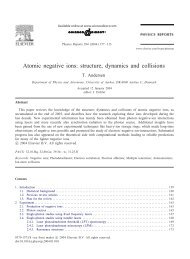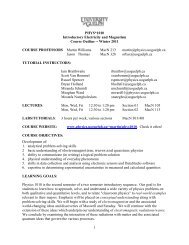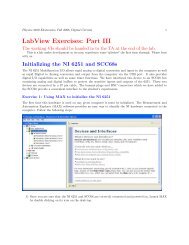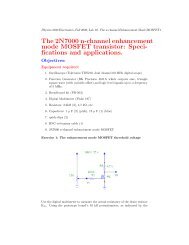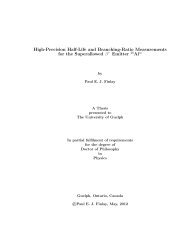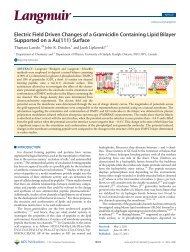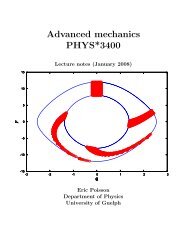Geant4 Simulations for the Radon Electric Dipole Moment Search at
Geant4 Simulations for the Radon Electric Dipole Moment Search at
Geant4 Simulations for the Radon Electric Dipole Moment Search at
Create successful ePaper yourself
Turn your PDF publications into a flip-book with our unique Google optimized e-Paper software.
Counts<br />
1400<br />
1300<br />
1200<br />
1100<br />
1000<br />
2<br />
χ red<br />
= 1.04<br />
f = 1.9999(2) Hz<br />
Counts<br />
24000<br />
23000<br />
22000<br />
21000<br />
0 5 10 15 20 25 30<br />
Seconds (500ms Time Bins)<br />
900<br />
800<br />
700<br />
0 1 2 3 4 5 6 7 8 9 10 11 12 13 14 15<br />
Seconds (20ms Time Bins)<br />
Figure 4.8: The fit to <strong>the</strong> 416 keV γ-ray time projection presented in Figure 4.5 <strong>for</strong><br />
two anti-parallel GRIFFIN detectors. The resulting reduced chi-squared indic<strong>at</strong>es a<br />
good fit and <strong>the</strong> precession frequency agrees with <strong>the</strong> simul<strong>at</strong>ed value of 2 Hz.<br />
4.2.2 Fitting Process<br />
Precession frequencies were extracted through fitting <strong>the</strong> d<strong>at</strong>a to a represent<strong>at</strong>ive<br />
function and using a χ 2 minimiz<strong>at</strong>ion method [56]. This method utilized a maximum<br />
likelihood approach tailored <strong>for</strong> counting experiments based on Poisson st<strong>at</strong>istics.<br />
The function used to fit <strong>the</strong> d<strong>at</strong>a was<br />
y = A 2 e −ln(2)x<br />
A 1<br />
+A 3 e −x<br />
A 4 + { A 7 sin(1A 5 (2πx)+A 6 )<br />
+A 8 sin(3A 5 (2πx)+A 6 )+A 9 sin(5A 5 (2πx)+A 6 )+···}e −x<br />
A 4 , (4.2)<br />
where A i are <strong>the</strong> fit parameters. The first term (A 2 e −ln(2)x<br />
A 1 ) describes <strong>the</strong> radioactive<br />
decay of <strong>the</strong> radonnuclei, where A 1 is<strong>the</strong> half-lifein seconds andA 2 is <strong>the</strong>intensity in<br />
counts per second. The second term (A 3 e −x<br />
A 4 ) describes <strong>the</strong> average intensity (A 3 ) as<br />
a function of <strong>the</strong> depolariz<strong>at</strong>ion time (A 4 ). Depending on <strong>the</strong> shape of γ ray angular<br />
70



